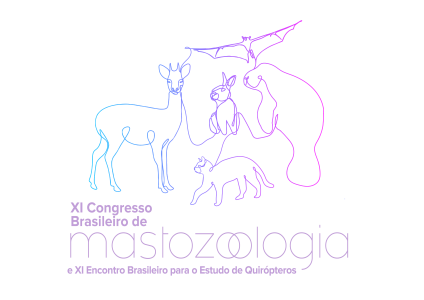Dados do Trabalho
Título:
HUMPBACK WHALES IN THE NORTHERN COAST OF BRAZIL
Resumo:
The humpback whale (Megaptera novaeangliae) population is growing, favoring the recolonization of historical occupation areas. The species’ distribution in Brazil is currently considered to range from Ilhabela, São Paulo (23°55’23.2” S, 45°26 53.7” W), to Natal, Rio Grande do Norte (5°47'40'' S, 35°12'40''W) and occurs from April to December, with peaks in August and September. There are records further north off the Brazilian coast, but there is no systematic survey effort. Therefore, this study aims to determine the occurrence of the species in Brazil north from Natal by (1) searching the Marine Mammal Monitoring Support System (SIMMAM) for humpback whale records in the study area; and (2) identifying humpback whales acoustic presence in recordings from an archival bottom-mounted sensor (Aural-M2 model) off Maranhão state (02°01.924’S, 43°12.000’W), deployed at a depth of 35 m, 36 km from the coast, and 36 km from the continental slope (Barreirinhas Basin). We found 64 SIMMAM records of humpback whales between Amapá (4°24'20.0"N 49°53'31.7"W) and Rio Grande do Norte coasts from 1994 to 2019. Of these occurrences, 7.81% were from stranding data (n=5), 35.93% were from sightings (n=23), and 56.26% were from acoustic records (n=36). Considering all years in SIMMAM, the highest number of sightings and acoustic records were from August, September, and November. Nonetheless, we found one sighting and one stranding record of humpback whales in January, which is a month outside the normal wintering period for the Breeding Stock A (off Brazil). Most of the acoustic records from SIMMAM were from August and September 2016 off Maranhão (summed=34). We have identified humpback whale songs in the Barreirinhas Basin recordings from July 2nd to October 30th in 2016. Throughout most of this period, there were at least three different males singing simultaneously, with periods when potentially more than five males sang at the same time. Our results show that males are not just passing through this area but using the Barreirinhas Basin as a reproductive display arena. This, together with the 64 SIMMAM records from the area, indicate that the northern Brazilian coast can be considered a breeding area for humpback whales. Individuals coming from the south are probably extending their migration to the north, or individuals may be coming from the northern hemisphere. Further analysis of song composition will help elucidate the matter. We thank CGG, Prooceano and COEXP/IBAMA for providing the archival acoustic dataset.
Keywords: Megaptera novaeangliae, Passive Acoustic Monitoring, distribution range, Breeding Stock, song.
Financiamento:
Área
Biogeografia/Macroecologia
Autores
Diana Carvalho de Freitas, Luane Maria Stamatto Ferreira, Ísis Viviane Bezerra da Silva, Artur Andriolo, Renata Santoro de Sousa-Lima
